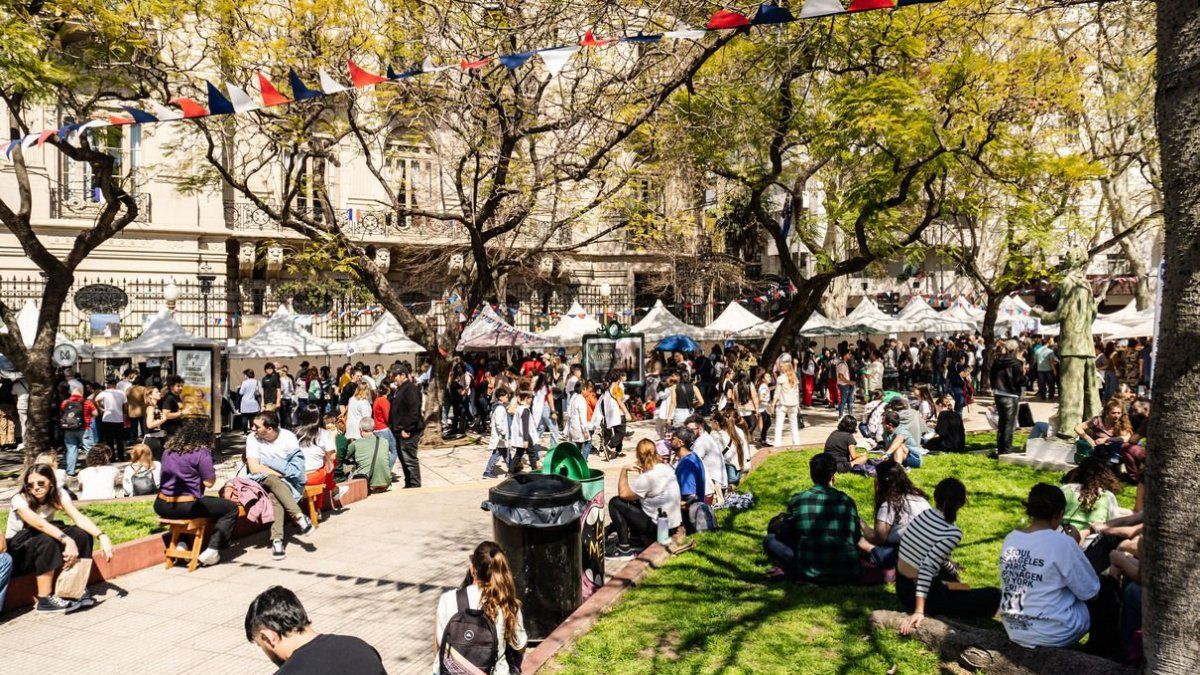But the electoral factor is not the only one that weighs on the dynamics of the informal dollar, that seems to inevitably go to overcome the psychological barrier of $ 200, a price that several days ago already exceeded the free CCL dollar in the stock market (this Tuesday it scored a maximum of $ 205), and many times it serves to anticipate the dynamics of the blue dollar.
High inflation, exchange controls, unfriendly economic signals for the market, expectations of an eventual devaluation of the official dollar, acceleration of the monetary issue, weakness of the Central Bank reserves and slow negotiations with the International Monetary Fund (IMF) for the debt They complete the combo of events that affect, according to analysts, the value of the informal dollar, whose exchange gap with the official price is approaching a disturbing 100%.
Next, the opinion of four analysts on the dynamics of the parallel dollar, and its eventual trajectory for the next few weeks.
Andrés Borenstein, Chief Economist at Econviews
There are many people with more pesos than they want to have and interest rates are very low for savers. It seems to me that the Government fails to give certainty: is going to talk to Wall Street with investors, but at the same time freezes prices.
People see that there is a possibility that, depending on the results of November 14, the economic policy will either go one way, or go the other. So it seems to me that, Faced with this dynamic, the most logical thing to do is take cover.
The blue was at four pesos of the $ 200, with which it is very likely that it will reach that level in the next few days, although obviously friendly hands may appear in delaying that milestone.
Sergio Morales, founder of Interfinance.com.ar
There are multiple factors that influence the price of the informal dollar. The first are the exchange controls via formal channels, which define the access of the majority of the population to this currency. This refers to restrictions on both access to the solidarity dollar and financial dollars.
Current BCRA regulations establish a 30-day period for the use of the dollars that arise from the operation with the most liquid bond, the Bonar 2030 (AL30) and, in turn, send them first to the bank account to determine their traceability. This produces that part of the demand for dollars is channeled informally.
A second point to consider is the electoral tension due to the proximity to the elections, which usually generates a dollarization by coverage.
Last but not least, the increase in inflation levels that generate a genuine demand for dollars by the general population, but it has a more direct impact on the parallel dollar, which, taking into account the country’s high labor informality, is the most accessible for the average worker.
Federico Glustein, economist
The jump of the blue is explained by several reasons. Before the elections, in addition to being dollarized as a precaution, the state is issuing pesos heavily, but, when seeking to get rid of that surplus, it goes to dollars, in this case, to the blue that is free.
Also, Government messages are that there will be no devaluation, intervention and price control, generating more uncertainty In the Argentine macro, then the answer is that the Country Risk rises, the financial dollars -especially with Cedears- exceed $ 200 and with the Global 2030 bond (GD30) it also overcomes psychological barriers, with which the blue responds in this way .
The pre-election context adds volatility, inflation does not drop below 50% per year and expectations do not yield, then, every macroeconomic data is a signal to help the dollar rise.
Walter Morales, president of Wise
This rise in the blue dollar was totally expected, and also it is likely to exceed $ 200 before November 14 because there is still a little more than a dozen wheels until the elections.
To the political uncertainty, the economic concern over the push and pull that exists with the International Monetary Fund, which is not a minor issue, in a context of shortage of reserves.
With which, it is logical that there are savers who want to cover themselves with dollar bills. Tactically, the only free one is blue, because the MEP is limited to one purchase per month.
As the dollar is a gap business, Today it is better to sit on dollar linked bonds in pesos than to have a blue dollar.
David William is a talented author who has made a name for himself in the world of writing. He is a professional author who writes on a wide range of topics, from general interest to opinion news. David is currently working as a writer at 24 hours worlds where he brings his unique perspective and in-depth research to his articles, making them both informative and engaging.




